How to grow currants: features of care, reproduction and pruning
Currant has a special status in Russian gardens and vegetable gardens. There is no other place on the planet as much of this culture as we have. Moreover, in Australia, for example, this useful berry does not grow at all. It is curious that among the closest biological relatives of currants are peonies and a money tree. And the elder brother of the berry is the gooseberry.
In the annals of ancient Russian cities, such as Pskov, the mention of currants occurs since the eleventh century. The plant was called the monastery berry, since for five centuries the bushes were grown exclusively on the territory of the monasteries, where the monks used the culture as food and for medicinal purposes. The main types of currants are black, white and red. In terms of the composition of nutrients, all three types differ. Interestingly, each age of a person has its own kind of berries. So, it is best for children to use black currant, for adults - red, and for the elderly, the white type is ideal.
Content:
- Black currant care
- Nuances in breeding white and red varieties
- Pruning and propagation of currants
- Diseases and pests
Black currant care
This type of crop is distinguished by good yield, cold resistance and unpretentiousness. However, the plant needs a little but constant attention throughout the year.
Conditionally, the stages of care can be divided into:
- Spring, the purpose of which is to prepare for the growing season.
- Summer, requiring watering and feeding.
- Autumn, when the plant is pruned and prepared for winter.
In one place, a currant bush can grow and bear fruit well for up to 15 years.
Adequate moisture in the soil is a prerequisite. Although, excessive humidity leads to a number of diseases, including fungal nature. Therefore, it is important to consider and provide a good drainage system.
In extreme cases, you can limit the amount of watering. Then you should constantly loosen and weed the ground, removing weeds. Another option that reduces the time for loosening and weeding is soil mulching. Optimal material for this procedure humus.
After mulching, you immediately solve a set of problems:
- Get rid of numerous weeds.
- Maintain constant soil moisture.
- You skip the obligatory fertilization of the earth in the fall, since humus during this period is buried at a sufficiently deep level and performs additional feeding functions.
- Save your own energy by reducing labor costs.
By the way, you cannot use the mulching technique with an increased moisture content in the substrate. Thus, when planting, you need to take care first of all about creating drainage, and only then proceed to mulching.
Feed the bushes necessary in the fall, before the onset of the first frost. Especially if the plant was not fertilized in the spring. A fertilizer containing a mineral base is used.
So, one of the options for the composition of the feeding can be:
- Saltpeter 9-11 g.
- Superphosphate 25-30 g.
- Potassium salt 15-20 g.
Fertilizer is either dissolved in water or added to the soil dry.To do this, you need to form small grooves up to 15 cm deep at a distance of 25 cm from the bush.
Some gardeners do not use mineral fertilizers in principle. They prefer to feed the currant bushes with manure. Here you need to be extremely careful in observing the proportion, which is one part of the slurry to three parts of water. Otherwise, you can burn the currant root system.
This type of feeding is carried out twice a year. Usually after flowering and after berry picking.
Only if you follow the simple rules of care, black currant of large-fruited varieties will delight you with the quantity and taste of the crop.
Nuances in breeding white and red varieties
These types of currants differ from black currants in the differences in the process of growth intensity and fruiting.
So, kidneys, subsequently forming bunches berries are two or even three times more durable than similar parts in bushes with black fruits... Also, the berries are evenly distributed throughout the plant, in contrast to varieties with black fruits, where the harvest is grouped mainly on the outer branches, closer to the ends.
The advantage of white and red currants is less thickening of the bush, which means a longer duration of the plant's life cycle.
It is, on average, five years higher than the blackcurrant varieties. This is due to the fact that in these two types of culture, the number of emerging young shoots is lower. There are no peculiarities in the care between red and white currants, since the species differ from each other only in the color of the berries.
The plant prefers loamy and sandy loam soils. It is not so sensitive to soil moisture, but it needs more light. For white and red currants, frequent weeding is important, since weeds with their strong roots cause significant damage to the crop.
Currant bushes are also fed with fertilizers:
- If superphosphates and potassium chloride are introduced into the soil in the fall, then nitrogen fertilizers are more suitable in the spring.
- It should be noted that the currants of these species require an increased amount of fertilizers. Otherwise, the plant weakens, the growth rate decreases, which leads to low yields of even well-proven varieties.
- It is especially important to fertilize the bushes in the first three years, when the root system and shoots are rapidly forming.
Planting currants is best in September:
- Grooves in soil should be done in advanceto allow the soil to settle a little.
- After planting, you need to compact the ground well to eliminate all voids, and then pour a bucket of water on the bush.
- At the same time, the seedlings are pruned, leaving a couple of buds on the surface. White and red currants can also be mulched.
- Black currant is inferior to these species in terms of resistance to frost and disease resistance.
- Interesting that Red Ribes does not like to grow next to black, preferring to live next to gooseberry bushes.
- Another feature of currants is the need for pruning the shrub, moreover, in early spring, when buds have not yet formed on the branches.
- It is also recommended to build special supports for the branches, which often break under the weight of the berries.
Pruning and propagation of currants
Pruning is necessary to maintain the level of yield of currants. It is necessary to remove old, weak and unproductive branches in order to enable strong young shoots to develop intensively.
Pruning steps:
- The first pruning is carried out after transplanting the currant bush to a permanent place. The purpose of this process is to establish a balance between the root part of the bush and the aboveground, as the balance is disturbed by transplanting the plant. Another task of the premiere pruning is to awaken and provoke the appearance of young shoots from the underground part.
- The next pruning is carried out after a year. This is done to create the shape of the bush. The second time, all underdeveloped and weak shoots are removed, leaving two pairs of strong shoots.Of these, the base of the bush will be formed in the future.
- Five-year-olds are pruned every year, removing even young shoots if they are broken, shade productive branches, or thicken the crop.
In white and red currants, the processes that become the base branches retain their apical growth longer. Productive branches also have high efficiency for a longer time.
The currants are propagated layering and cuttings. The seed method does not make it possible to preserve the varietal properties of the crop.
Pay attention to the choice of where to plant the cuttings. It is generally known that for better rooting, it is better to prefer an area with shade. In the case of currants, this rule has an exception.
Recommendations for breeding currants:
- Shrubs planted in the sun will subsequently yield much more harvest, and the berries will be sweeter.
- If the bush was nevertheless planted in a shaded sector, then you can safely transplant the young plant to a better place with intense lighting.
- Black currants take root better than red currants. You can not take shoots from which it is planned to prepare cuttings from damaged and diseased bushes.
- The currants are propagated by dividing the bush. This method is not popular. They resort to it only in case of a lack of planting material of especially valuable varieties.
- Propagating the plant by layering, horizontal, arcuate and vertical jigs are used.
Division by green cuttings is three to four times more productive due to the high intensity of plantings.
This method is used for new, but also hybrid varieties... In general, the propagation technique of currants is similar to the division of all fruit and berry bushes.
Diseases and pests
Experienced gardeners recommend choosing varietal bushes of any type of currant, not only by the taste of berries, their size and abundance of the harvest, but also by the level of resistance to pests and diseases.
To pests most often infecting culture, include aphids, golden beetles and moth caterpillars. Of the diseases dangerous to currants, one can name goblet rust, powdery mildew and anthracnose. Although the leaves of the plant are affected primarily, in the future, the ailments affect the number and size of the fruits.
So, let's take a closer look at some types of diseases and pests.
Currant anthracnose.
- Tiny brown spots appear on the leaves.
- They are also characterized by a shiny tuberosity.
- A large number of stains merge.
- The leaves dry up and crumble.
- The disease is fungal in nature.
- Most often bushes get sick with anthracnose red currant. The soil in areas with affected bushes is treated with copper sulfate. The fruiting bush is sprayed with Bordeaux liquid.
Moth caterpillars.
- The insect is dangerous for both currants and gooseberries, therefore the moth is also called gooseberry.
- Caterpillars of pink color gnaw through the pistil column and settle in the ovary of the currant, subsequently eating the pulp and seeds of the berries.
- Later the caterpillars turn green.
- You can determine the presence of parasites by finding dried berries and cobwebs around them.
The methods of struggle include direct collecting pests from the bush... It is recommended to observe thinning when planting bushes. You can spray the plant with melathion.
Kidney mite. Black currants are especially susceptible to this ailment. The main symptom of a pest is enlarged buds that look like popcorn. Leaves from them appear weak and deformed.
First of all, you need to use only healthy cuttings and layers for planting.
In the fight against the parasite infusion of garlic will help... It is best to remove the affected kidneys. As you can see, the cultivation of currants does not present any particular difficulties and the plant belongs to an unpretentious fruit and berry culture.
More information can be found in the video.



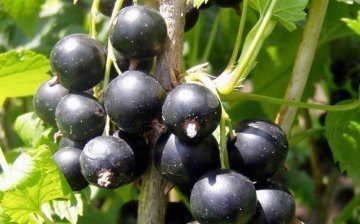
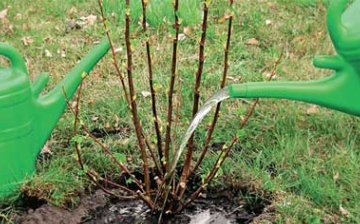
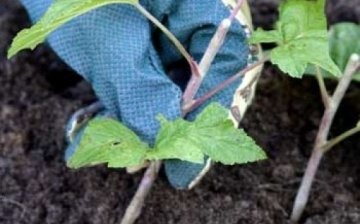
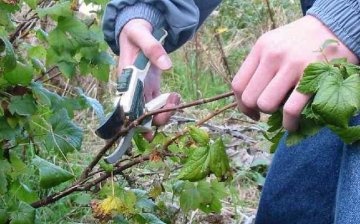
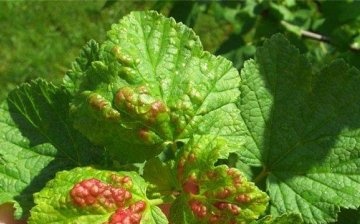





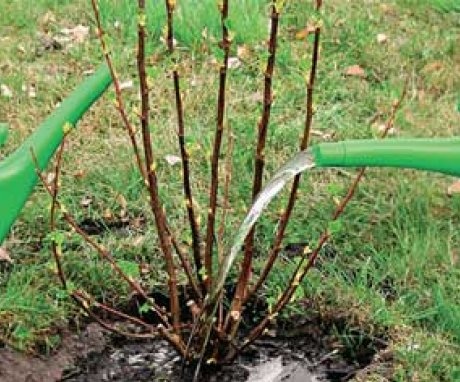
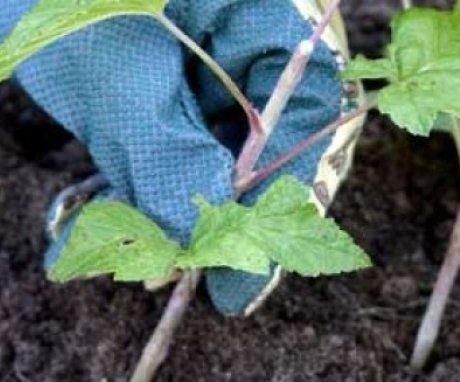

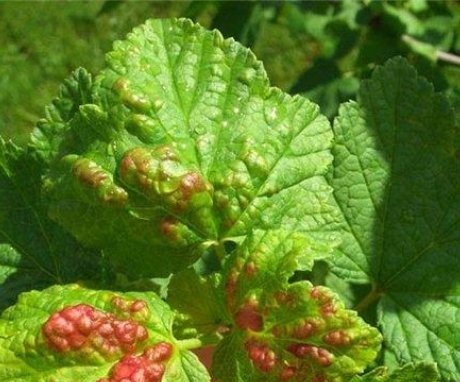
I love black currants! she's so delicious and flavorful. I never thought that there could be any differences in caring for currants of different colors, they always did everything the same for all bushes. Now I will know, thanks.
We rejuvenate each bush every two years. Cut the branches completely to the root. The berries are then big and tasty. If this is not done, then the bush begins to pea.